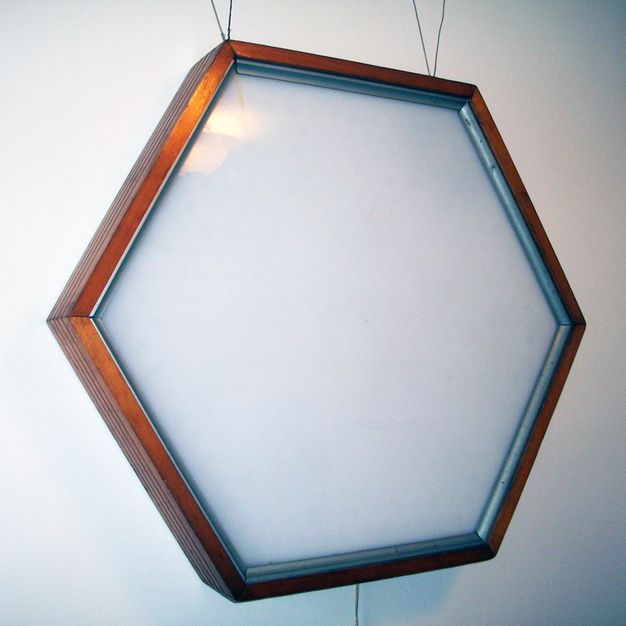
The piece of electronic cartographic art depicted in this video, Hexagonia, acts as a visual representation of one of geography’s most famous models: central place theory (or CPT). First theorized in the late-nineteenth century by German geographer Walter Christaller, CPT posits that the essential function of cities is to provide services for their surrounding regions. In Hexagonia, the blinking lights of different sizes symbolize differently sized settlements in this urban hierarchy.
When Geoffrey Dutton created Hexagonia in 1969, he was enrolled as a student in Harvard’s Graduate School of Design and worked as a research assistant at the Laboratory for Computer Graphics and Spatial Analysis. The Hexagonia device itself consists of lamps in small glass tubes which are spaced about 1.5 inches apart in a triangular grid. The lamps blink out nearly 400 distinct configurations every second, which take on a mesmerizing, nearly hypnotic quality when slowed down by 95%.
In his book New Lines, Matthew Wilson reflects on Hexagonia as an early form of “animated” cartography. What can Dutton’s analog experiment exploring “the beauty of the science of place,” Wilson asks, reveal about the modern impulse to make maps that move?
The mystery of map animation may lie in its unresolvable tension, neither art nor science, of fixing space and opposing time… Perhaps the potential of maps that move is precisely in their uncanny appropriateness for our space-times.